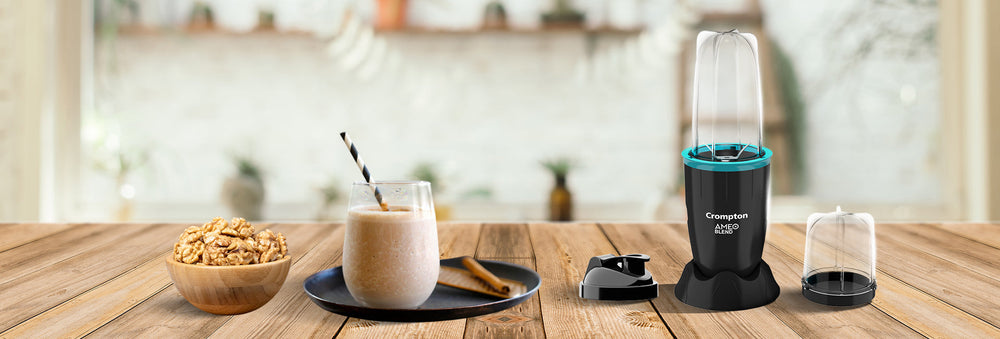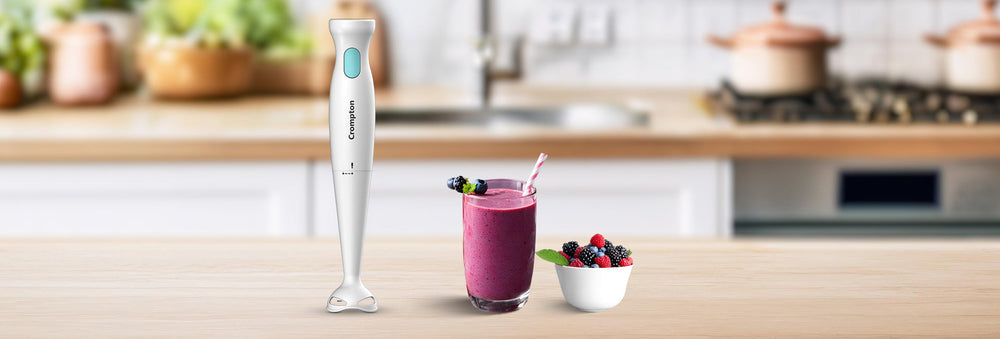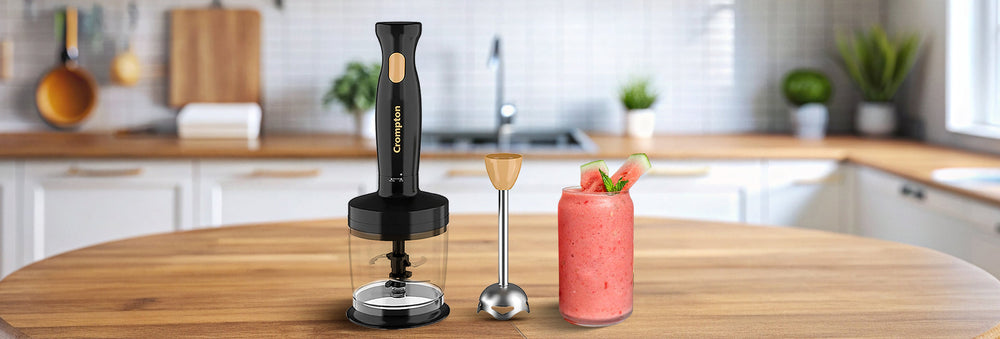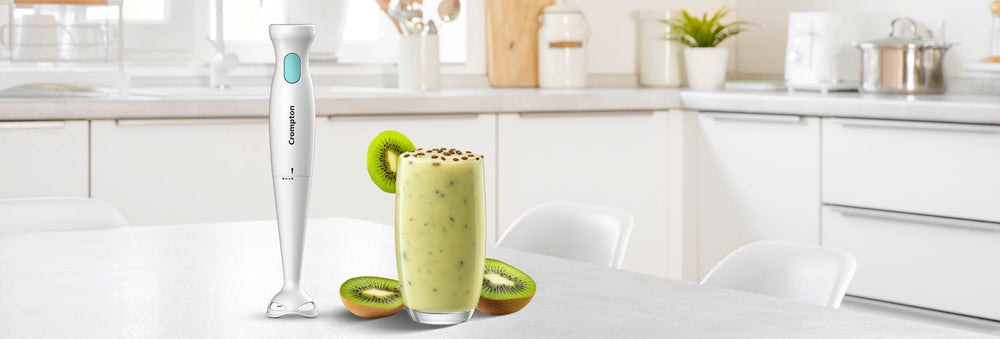How to Use and Maintain a Hand Blender for Perfect Results?


Hand blenders, also known as immersion blenders or stick blenders, are versatile kitchen tools that are great for blending, pureeing, and whisking. They are easy to use and are perfect for tasks like making smoothies, soups, and sauces. If you’re new to using a hand blender, don’t worry! In this guide, we’ll cover everything you need to know about using a hand blender effectively.
How does a Hand Blender work?
Before you get started with the actual blending, it’s important to familiarise yourself with the hand blender and its different parts. Most hand blenders consist of two parts: the motor and the blending arm.
The blending arm is usually detachable and can be interchanged with different attachments depending on the task at hand. Some common attachments include a whisk, a chopper, and a blending blade.
- Once you’ve unpacked your hand blender, make sure that it’s clean and ready to use
- Check the power cord and make sure it’s plugged in securely
- Choose the appropriate attachment for the task at hand
- Turn on the blender and start blending. Use the blender in a circular motion to ensure that everything is blended evenly
- Be sure to blend in short bursts instead of continuous blending to avoid overheating the motor
If you’re using the blender to make soup or a thicker mixture, be sure to use a tall container to avoid splattering. You can also use the pulse function to have more control over the blending speed.
Tips to Use a Hand Blender Effectively
While using a hand blender might seem like a cakewalk, it is important to keep in mind the following pointers to make the most of your kitchen appliance to prevent any spills or damage to the device.
- Use a tall container: Using a tall container can help you avoid splattering when blending thicker mixtures like soup or smoothies
- Use short bursts: Blending in short bursts can help you avoid overheating the motor and make the blending process more efficient
- Avoid blending too much at once: Blending too much at once can lead to splattering and uneven blending. Instead, blend in small batches to achieve a smoother consistency
- Use the pulse function: The pulse function allows you to have more control over the blending speed, which can be useful when you’re trying to achieve a specific texture or consistency.
How can you Clean & Maintain your Hand Blender?
Cleaning your hand blender is just as important as using it correctly. You can carry it out in the following ways.
- Always unplug the blender before cleaning it
- Remove any detachable parts and clean them separately
- You can use warm, soapy water to clean the attachments, or you can put them in the dishwasher if they are dishwasher-safe
- To clean the body of the blender, use a damp cloth to wipe it down. Do not immerse the motor in water, as this can damage it
When you’re not using your hand blender, store it in a dry and safe place. This will help prolong its lifespan and ensure that it’s ready to use whenever you need it.
The Takeaway
In conclusion, a hand blender is an essential tool for any kitchen, and by following the tips and tricks outlined in this guide, you can use it to make a wide range of dishes with ease. You can bring home an excellent hand blender from Crompton’s wide range if you’re on the lookout for high-quality and reliable kitchen appliances.
Our hand blenders come with powerful motors, multiple attachments for various tasks, and easy-to-use controls for precision blending. Additionally, the ergonomic design of Crompton’s hand blenders makes them comfortable to hold and operate for extended periods. With our hand blenders, you can effortlessly whip up delicious smoothies, soups, and sauces in no time.

 Read Previous Blog
Read Previous Blog



 at 9228880505 or write to us at
at 9228880505 or write to us at 